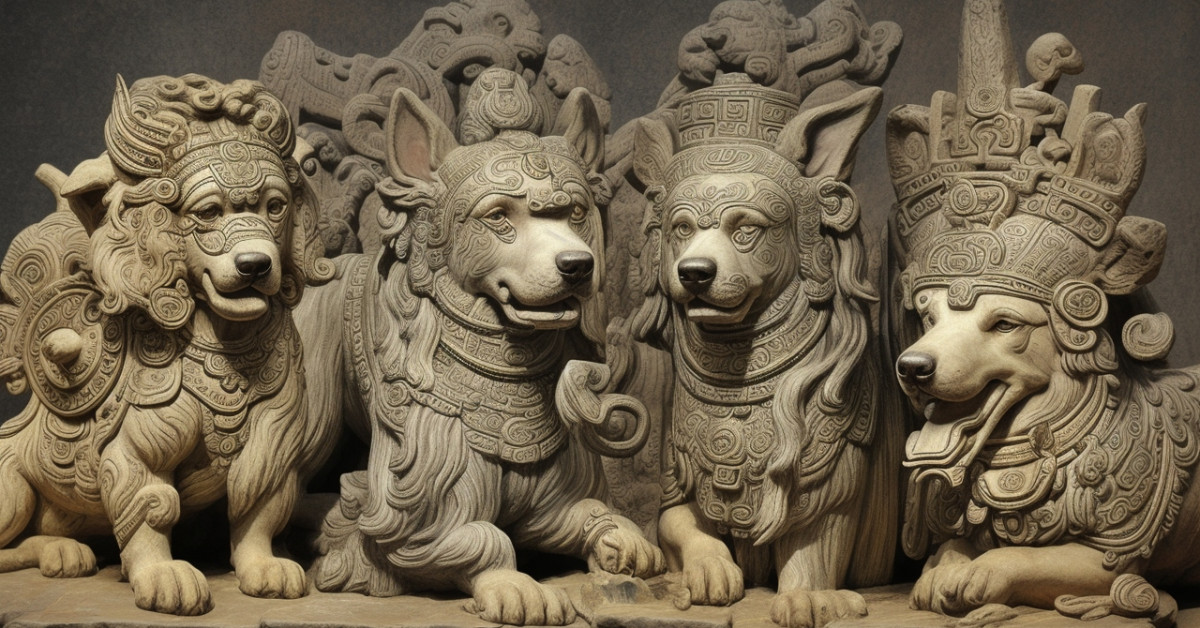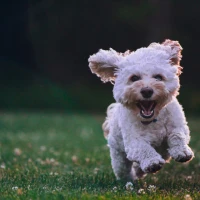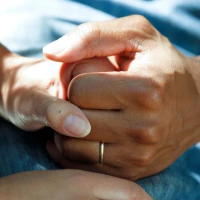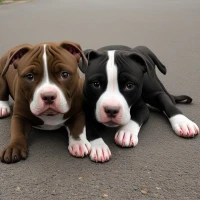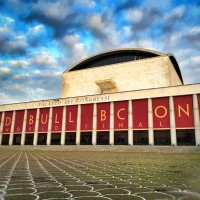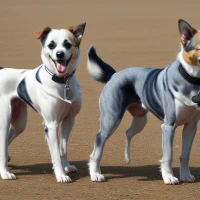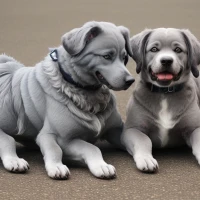Embark on a tantalizing journey through time as we unravel the majestic tapestry of 9 Ancient Dog Gods & Deities. In the hallowed pantheon of canine worship, these divine guardians have stood as symbols of loyalty, protection, and mystical powers that have captivated human hearts for millennia. From the far reaches of Mesopotamia to the exalted temples of Egypt, delve into the enigmatic realm where dogs were not just pets, but revered entities shrouded in spirituality and ancient magic. Join us as we unleash the hidden lore that has been reverently whispered by generations of worshippers, beckoning you to discover the secrets and sagas of the most esteemed creatures in mythical history.
Meta Description: Uncover the awe-inspiring legacy of 9 Ancient Dog Gods & Deities, as we take you on a spellbinding odyssey into the realms of canine worship and the mysterious bond between dogs and divine cultures of yore.
1. Anubis
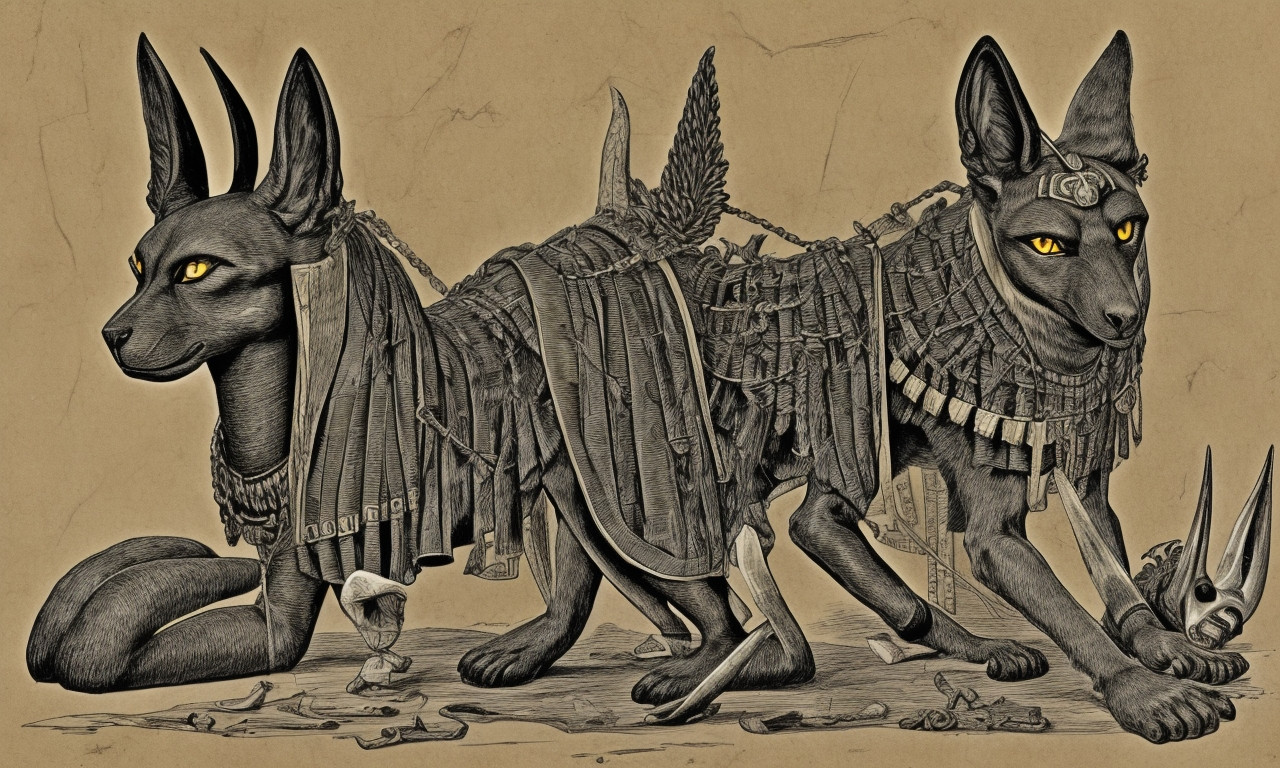
- Anubis: Anubis is one of the most prominent and well-known canine deities from ancient Egyptian mythology. Depicted with the body of a man and the head of a jackal, Anubis was considered the god of mummification and the afterlife. As a protector of graves and a guide to the afterlife, Anubis was also entrusted with leading departed souls through the Duat (the Egyptian underworld), where their hearts would be weighed against the feather of Ma’at (truth) to determine their fate in the afterlife.
Anubis’ role as a guardian and judge of the dead made him an essential figure in funeral rites and ceremonies. His presence was believed to prevent the unworthy from entering the eternal realms and to ensure that the processes of embalming and burial were conducted with the appropriate rituals and offerings. Anubis’ sacred animals were black dogs and jackals, which were often found loitering around cemeteries, thus bolstering the association between the deity and the animals.
The worship of Anubis extended throughout the entire history of ancient Egyptian civilization, with several temples and shrines dedicated to him. The cult of Anubis provided the faithful with a sense of security about their fate after death, assuming they led a life in accordance with the principles of Ma’at.
As one of the ancient dog gods, Anubis represents the close relationship humans have had with canine figures, both in a physical and mythological sense, highlighting the role of dogs not just as companions, but also as symbols of spiritual significance.
2. Bau

Bau, also known as Baba, is an ancient Mesopotamian goddess who was greatly venerated as a divine protector and healer. Associated with the city of Lagash, Bau had a strong connection with dogs, which were considered sacred to her and were often depicted at her side in artistic representations.
As a deity that transcends time and cultures, Bau’s portrayal as a healing and protective goddess contributed to the reverence of canines since dogs were commonly seen as guardians and healers in their own right. They were appreciated for their loyalty, their ability to sense danger, and their role in hunting and protection for their human companions.
Bau’s cult is a rich tapestry of religious worship and ritual. Dogs were sometimes buried with the dead, believed to offer guidance throughout the afterlife, reflecting their status as divine protectors. Ceremonies and offerings to Bau and her canine companions would aim to invoke her favor, asking for health and protection against misfortune. The link between Bau and dogs is a testament to the deep spiritual connection that ancient civilizations perceived between humans and the animal world, particularly with animals that shared their lives so closely.
The worship of Bau, with her canine associations, highlights the complex layers of meaning within ancient religious systems, where gods were not only focal points of worship but also emblematic of the reciprocal relationships between humans, animals, and the divine realm. Bau’s legacy is part of a broader tapestry of canine worship that spans numerous cultures and epochs, embodying the timeless companionship between humans and dogs.
3. Fenrir
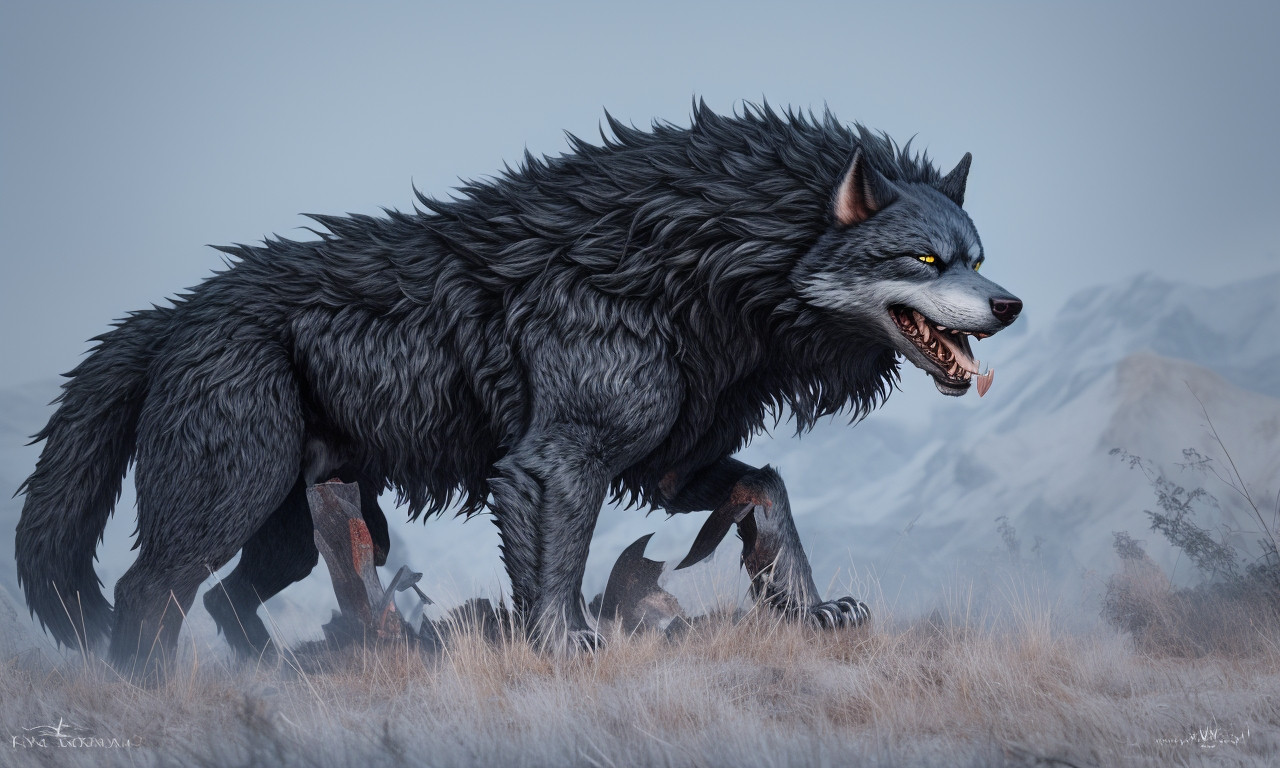
In Norse mythology, Fenrir stands out as one of the most formidable figures among ancient dog gods and deities. This colossal wolf is not a dog in the typical sense but is significant due to his canine attributes and the role he plays in the myths. Son of the god Loki and the giantess Angrboda, Fenrir is a pivotal character in the Norse pantheon.
From his early days, Fenrir was recognized for his rapid growth and immense strength, which eventually led the gods to bind him to prevent him from unleashing chaos. The binding of Fenrir is a well-known tale that symbolizes the struggle between order and chaos—a common theme within Norse mythology.
Despite his fearsome reputation, Fenrir’s role in mythology is deeply intertwined with fate and the cosmos’s natural order. He is prophesied to play a critical part in Ragnarok, the end of the world in Norse legend. During this apocalyptic event, Fenrir is destined to break free from his chains and engage in a cataclysmic battle with the gods. In this battle, it is said that he will face Odin, the Allfather, ultimately leading to the death of both.
Fenrir’s influence extends beyond his role in Ragnarok; he fathered two wolves, Sköll and Hati, who are said to chase the sun and moon, respectively, seeking to devour them, contributing to the daily cycle of day and night, as well as to the cosmic balance of time.
Today, Fenrir continues to capture the imagination as an embodiment of primordial power and untamed nature. His symbolic presence in art and literature continues to be a testament to the lasting impact of ancient mythologies on human culture, showcasing the complex relationship mankind has with the concept of the divine and the natural world, as seen through the lens of canine-like deities.
4. Kerberos
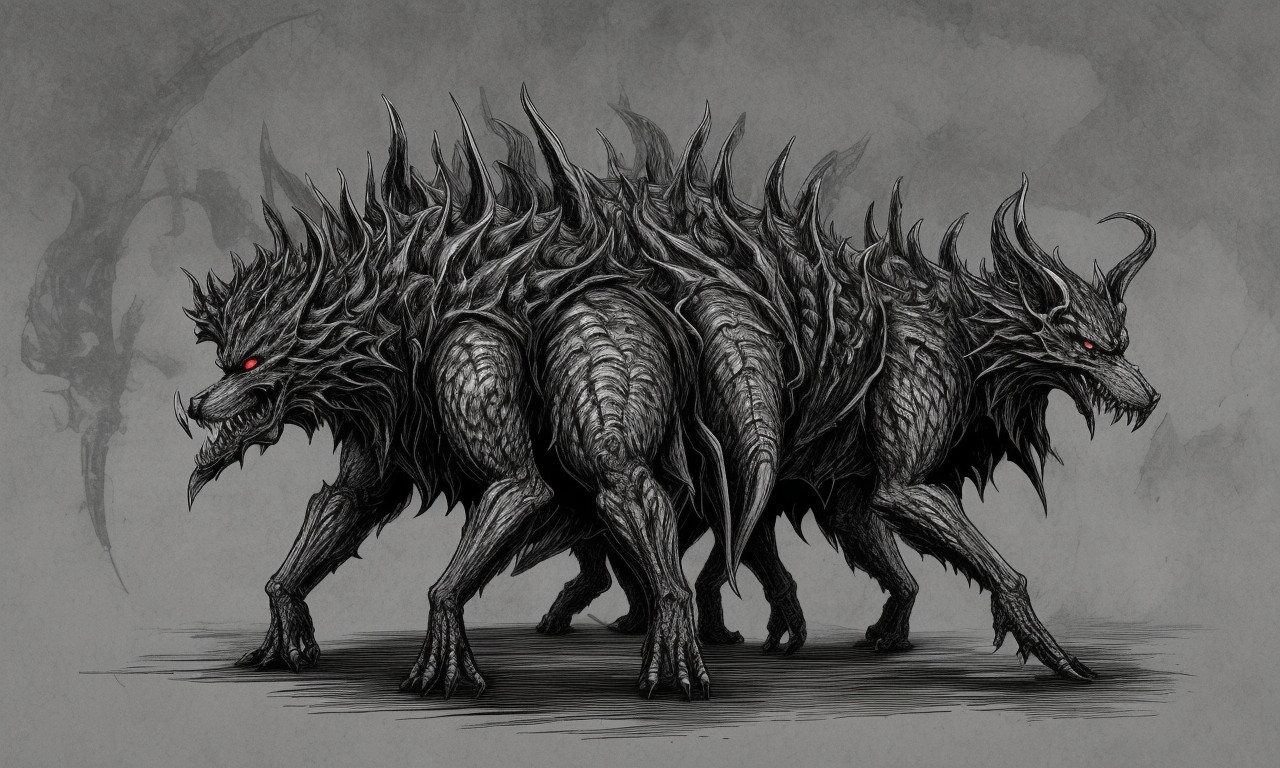
In ancient mythology, Kerberos, also known as Cerberus in Latin, is one of the most notable canine deities. This multi-headed dog is famously associated with Greek and Roman mythology and is often depicted guarding the gates of the Underworld to prevent the dead from leaving. Kerberos is typically portrayed with three heads, each of which is said to see the past, the present, and the future, though some accounts and art pieces render the creature with as many as fifty or a hundred heads.
Kerberos is the offspring of the monsters Echidna and Typhon, making it part of a monstrous family that includes many of the most fearsome creatures in Greek mythology. This dog’s duties entailed not only keeping the deceased within the bounds of the Underworld but also making sure that living beings could not enter the realms of the dead unwarranted.
One of the most famous tales involving Kerberos is the twelfth labor of Herakles (Hercules in Roman mythology), in which the hero was tasked to capture and bring the monstrous dog to the land of the living without the use of weapons. This feat was accomplished through strength and cunning, demonstrating Herakles’ power and determination.
Kerberos represents the fear of the unknown that often accompanies death, as well as the safeguarding of the natural order—that is, keeping the living and the dead separate. The depiction of this fearsome canine deity also symbolizes the belief in obstacles that must be overcome at the transition points of existence, not least the transition from life to the afterlife.
As a symbol, Kerberos has persisted through the centuries, continuing to appear in various forms of artwork, literature, and cultural references, maintaining its status as an iconic figure of ancient canine deities.
5. Kitsune

Kitsune is a term that originates from Japanese folklore and is often associated with the Shinto religion. It refers to a mythical, intelligent fox capable of possessing supernatural abilities. In many stories, Kitsunes are depicted as having the power to transform into humans, usually women, and are known for their cunning nature. They are often considered to be messengers of Inari, the Shinto deity of rice, fertility, and prosperity.
The Kitsune is revered in Japan and is featured in countless myths and legends. They are believed to have the ability to ward off evil spirits, and statues of foxes can often be found at Inari shrines, symbolizing a protective presence. These divine foxes come in two types: zenko (good foxes), which are benevolent, celestial beings, and yako (field foxes), which tend to be more mischievous or even malevolent.
It’s said that Kitsunes can have multiple tails, and the number of tails is an indication of their age, wisdom, and power. A Kitsune can have up to nine tails, the nine-tailed fox being the oldest and most powerful among them.
Kitsune worship has influenced various aspects of Japanese culture, from festivals and the arts to contemporary media such as anime and manga, where Kitsune characters often appear. Their mysterious nature and ability to traverse the boundary between the divine and the mortal world make them a fascinating subject in the exploration of ancient canine deities and their significance in human societies.
6. The Morrigan
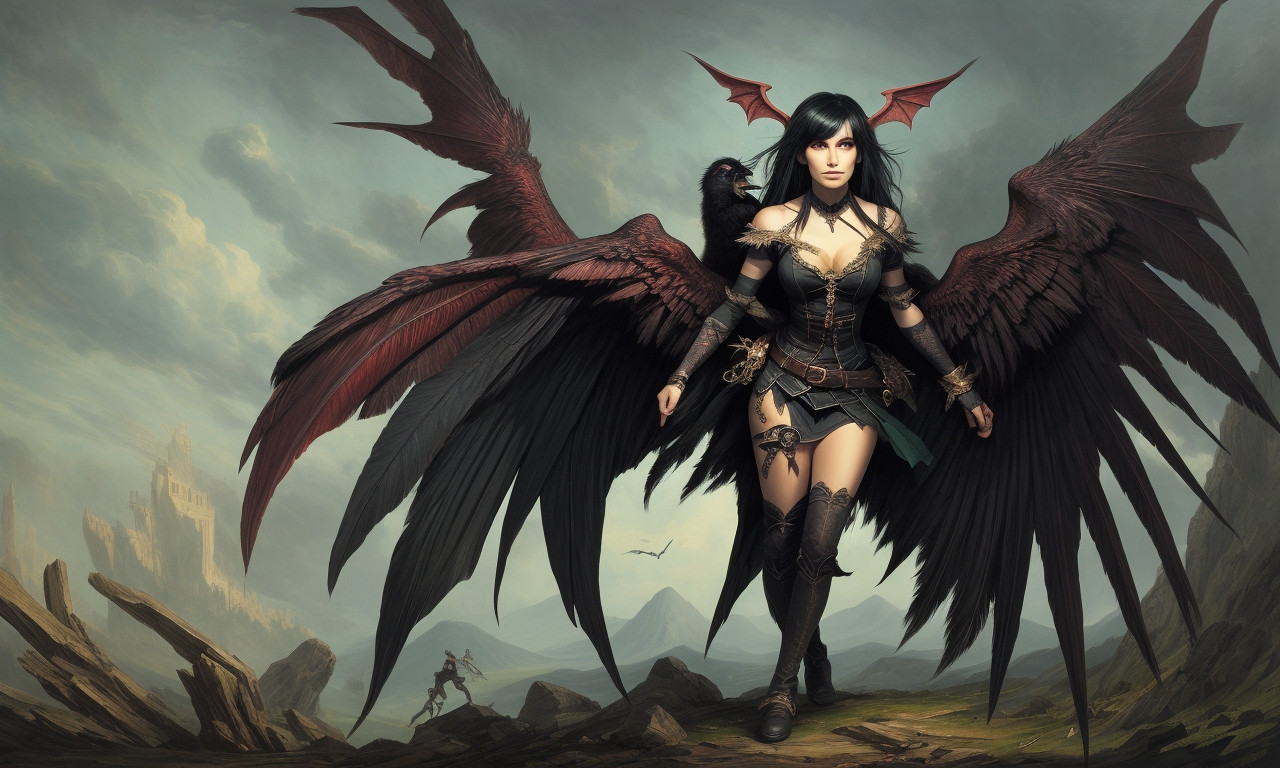
The Morrigan, a figure from Irish mythology, is often associated with war and fate, particularly with foretelling doom, death, or victory in battle. While The Morrigan is primarily depicted as a goddess with connections to war and sovereignty, she is also part of a greater triplicity often referred to as the Morrígan or the Morrigu, which includes Badb and Macha and can sometimes be understood as a collective of goddesses, all of whom are associated with battle and sovereignty.
It’s important to note that The Morrigan herself is not typically represented as a dog or associated with canine forms. However, in Celtic mythology, there are references to shape-shifting abilities of deities and The Morrigan is no exception to this - being capable of transforming into various animals, including a crow or raven traditionally, which is a typical symbol of her presence on the battlefield. The connection with dogs specifically might be less direct, but given the integral role of dogs in Celtic culture as symbols of protection, hunting and war, it’s not inconceivable for The Morrigan to be associated with them at a cultural level.
Canine attributes, such as loyalty, protection, and guidance in warfare could be symbolically linked with attributes of The Morrigan, even if she is not directly worshipped as a dog deity. Furthermore, dogs in ancient times were often seen as guides to the afterlife or associated with healing, which can loosely connect to The Morrigan’s role in fate and death.
To fully understand The Morrigan’s connection to the topic of canine worship and dog gods and deities, it would involve a more interpretative approach that looks at the broader themes of ancient mythology and the cultural significance of dogs, rather than a direct correlation between The Morrigan and canine worship.
7. Set
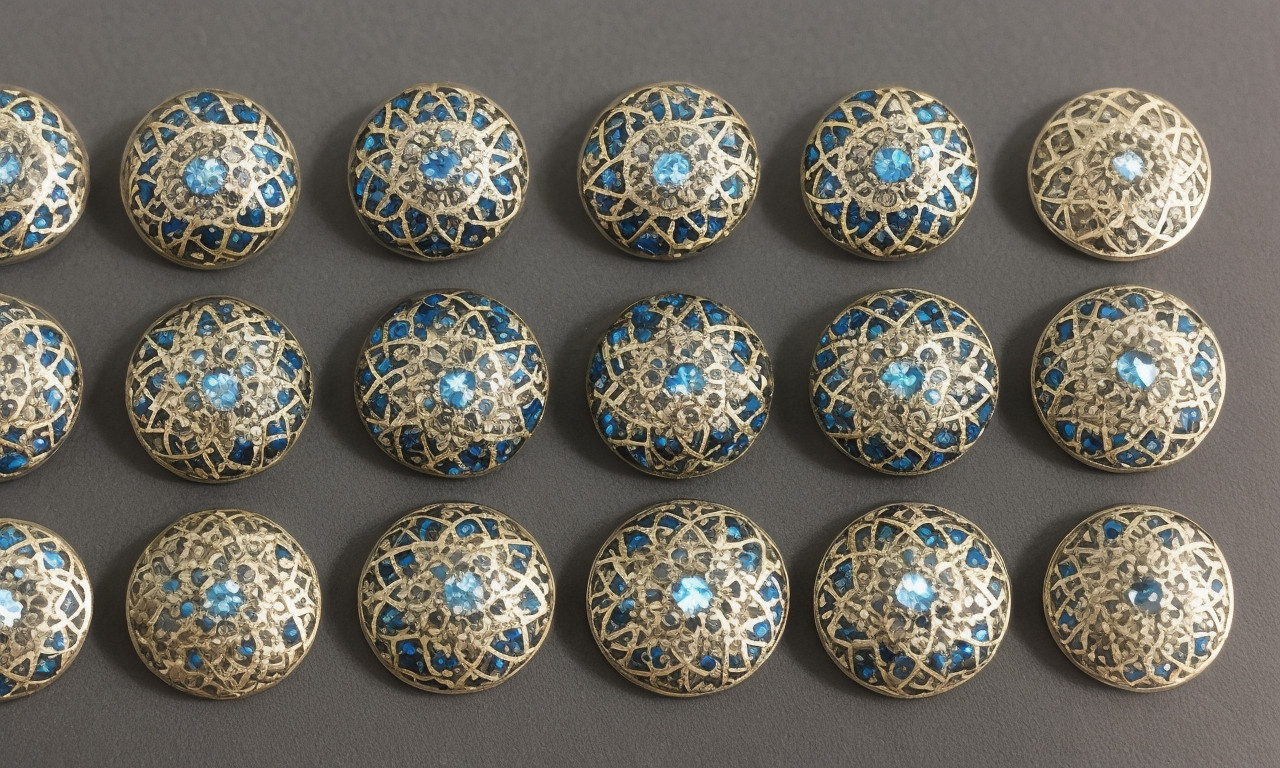
Set, also known as Seth, Sutekh, or Setesh, is an ancient Egyptian deity often associated with chaos, violence, deserts, storms, and foreigners. In the realm of canine worship, Set is sometimes depicted as having the head of an enigmatic creature that has been interpreted by some scholars as a composite of aardvark, donkey, jackal, or fennec. This creature has come to be known as the Set animal or Sha.
While Set is not exclusively considered to be a dog god, there is a connection between Set and canines. The close association of dogs, especially those resembling the Set animal, with guarding and hunting could symbolize the more protective and assertive aspects of Set’s character as seen in some myths.
In earlier Egyptian history, Set was a respected god of the desert, who was seen as a defender of Ra against the chaos serpent Apep. Dogs, much like Set, were guardians and protectors. Thus, there might have been an implicit respect and reverence for traits common between Set and canine figures in this capacity.
However, Set’s image changed over time, and during periods of his demonization, he was more associated with the hostile elements he represented, such as storms and disorder. This negative portrayal might have impacted how canines connected with Set were perceived.
Nevertheless, the worship or veneration of Set at times did include admiration for his strength, and his ability to stand firm against the chaos that threatened the cosmic order. Similarly, within domestic and community life, dogs performed roles that aligned with these protective and tenacious characteristics, perhaps drawing a parallel with the god Set.
In summary, Set is not exclusively a dog deity, but he shares several attributes with canines that were respected in ancient Egypt. These attributes could encompass the more complex relationship between chaos and order that both the god and dogs represented in the mythological and daily life of ancient Egyptians.
8. Wepwawet

Wepwawet, often depicted as a wolf or a man with a wolf’s head, is a prominent figure in Egyptian mythology. Known as the “Opener of the Ways,” this ancient canine deity was revered as a god associated with war and death, but also as a protector and guide to both the deceased and the living.
Wepwawet’s origins can be traced back to the earliest periods of Egyptian history, where he was worshipped in the city of Asyut, also called Lycopolis or “city of the wolves.” His role evolved over time, with intersections in functions and iconography with Anubis, the better-known jackal-headed god of mummification and the afterlife.
A distinct feature of Wepwawet’s worship was his association with the pharaoh’s military campaigns. He was invoked to ensure the army’s victories, and his image would often be carried atop a standard to lead the troops into battle. His guidance was thought to clear obstacles, open paths, and reveal hidden knowledge, extending his influence beyond the battlefield into exploration and the journey through the afterlife.
Wepwawet’s cult maintained significance throughout the dynastic periods, with temples and elaborate religious practices dedicated to him. He remained a powerful symbol of divine leadership and was often invoked for his ability to navigate the complex paths of the underworld, ensuring safe passage and the eventual unification with the gods for those who had passed away.
As with other ancient deities, the reverence for Wepwawet demonstrates the deep-rooted connection between spirituality and daily life in ancient cultures, where gods were seen as integral to the success, protection, and progression of both earthly endeavors and post-mortem journeys.
9. Xolotl
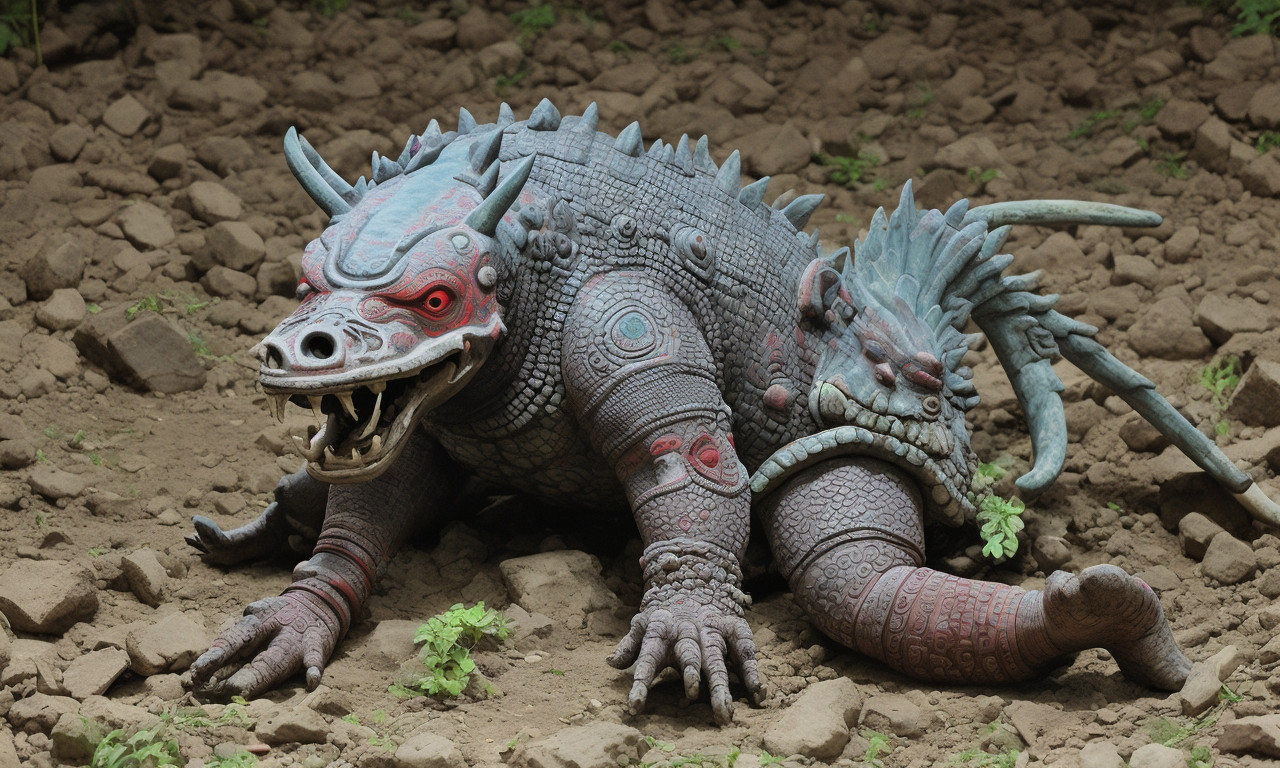
In Mesoamerican mythology, the figure of Xolotl holds significant importance as a god associated with dogs. Xolotl was believed to be the twin brother of Quetzalcoatl, one of the most important gods in the Aztec pantheon. However, while Quetzalcoatl was associated with the creation and the life-giving aspects of the divine, Xolotl’s role was intimately tied to the underworld.
Xolotl’s canine connection is reflected in his depictions: he is often portrayed as a skeleton or a man with the head of a dog. The Aztecs believed that dogs accompanied the souls of the dead on their journey through the underworld, and Xolotl, as the guardian of the sun as it traveled through the night, was also a guide for these souls. Dogs, thus, were considered sacred animals, and Xolotl was their divine embodiment.
Moreover, Xolotl was also associated with lightning and fire. He was considered the god of monstrosities, guarding over all things malformed or unusual. Yet, despite these seemingly ominous attributes, Xolotl was not viewed negatively. Instead, he was respected for his role as a protector of the sun and as a guide for the departed.
Xolotl’s myth also includes a narrative where he is responsible for the creation of mankind. According to legend, after the fourth world had been destroyed, and humanity along with it, it was Xolotl who retrieved a bone from the underworld and sprinkled it with blood to give life to the new race of men for the fifth world, our current era.
As far as dog deities go, Xolotl’s multifaceted nature and close relationship with the canine species make him a unique and compelling figure in the realm of canine worship. His presence in this realm of divine and spiritual beings highlights the depth and complexity that ancient cultures attributed to dogs and their spiritual significance.
